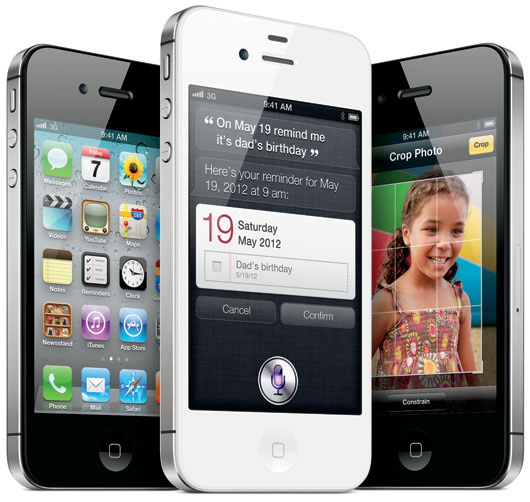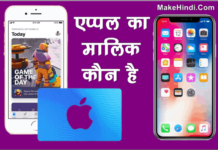| iPhone |  4 (GSM/CDMA) |
 4S |
|
|---|---|---|---|
| Intro Date: | Jun. 7, 2010 | Oct. 4, 2011 | |
| Disc Date: | Sep. 10, 2013 | Sep. 10, 2013 | |
| Display: | 3.5″ | 3.5″ | |
| Resolution: | 960×640 | 960×640 | |
| Processor: | Apple A4 | Apple A5 | |
| Cores: | Single Core | Dual Cores | |
| Storage: | 8, 16, 32 GB | 8, 16, 32, 64 GB | |
| RAM: | 512 MB | 512 MB | |
| GSM/EDGE: | Yes/No | Yes | |
| UMTS: | Yes/No | Yes | |
| HSDPA: | Yes (7.2 Mbps)/No | Yes (14.4 Mbps) | |
| HSUPA: | Yes/No | Yes | |
| EV-DO: | No/Yes | Yes | |
| 4G/LTE: | No | No | |
| Bluetooth: | 2.1+EDR | 4.0 | |
| GPS: | GPS | GPS/GLONASS | |
| 802.11n: | 2.4 GHz | 2.4 GHz | |
| Talk Time (3G): | 7 Hours | 8 Hours | |
| Talk Time (2G): | 14 Hours/No | 14 Hours | |
| Battery (Web – 3G): | 6 Hours | 6 Hours | |
| Battery (Wi-Fi): | 10 Hours | 9 Hours | |
| Battery (Music): | 40 Hours | 40 Hours | |
| Battery (Video): | 10 Hours | 10 Hours | |
| Standby Time: | 300 Hours | 200 Hours | |
| SIM Card: | Micro/None | Micro | |
| Connector: | Dock (30-Pin) | Dock (30-Pin) | |
| Headphone Jack: | Top-Mounted | Top-Mounted | |
| Original OS: | iOS 4.0/4.3 | iOS 5 | |
| Fastest OS: | iOS 6 | iOS 7 | |
| Maximum OS: | iOS 7 (Partial) | iOS 9 (Basic) | |
| Siri Support: | No | Yes | |
| AirDrop Support: | No | No | |
| Continuity Support: | No | No | |
| Transit (iOS 9): | No | No | |
| Still Camera: | 5 Megapixels | 8 Megapixels | |
| Video Camera: | 720p | 1080p | |
| FaceTime Camera: | VGA | VGA | |
| Materials: | Glass/Steel | Glass/Steel | |
| Dimensions: | 4.5 x 2.31 x 0.37* | 4.5 x 2.31 x 0.37* | |
| Weight: | 4.8 oz. (137 g) | 4.9 oz. (140 g) | |
| Model No: | A1332/A1349 | A1387/A1431 |
However, even though they may not have major differences visible to the naked eye — there nevertheless are major differences between the iPhone 4 and the iPhone 4S.

Photo Credit: Apple, Inc.
External Differences
The iPhone 4 and iPhone 4S models all use the same general all stainless steel body design and a thin “metal band” that wraps around the sides of each phone. However, the iPhone 4 (GSM) models and the iPhone 4S have an access panel on the right side (and an enclosed Micro SIM card) and the iPhone 4 (CDMA) does not have an access panel or a SIM card.
Additionally, the iPhone 4 (GSM) models have three antenna “breaks” in the metal band (one on the top and one on each side toward the bottom) and the iPhone 4 (CDMA) and iPhone 4S have four (two on both sides toward the top and bottom).
The rear camera also has considerably better specs on the iPhone 4S — capable of shooting 8 megapixel stills and 1080p 30 FPS video. The older iPhone 4 models, by contrast, are capable of shooting 5 megapixel still photos and 720p 30 FPS video. Both lines have a VGA quality front-facing camera designed for use with Apple’s “FaceTime” software (although it works equally well with third-party applications like Skype). The camera in the iPhone 4S is faster, too, and is ready to take photos within a second of launch and additional photos within a half second.
Identification Differences
One simple way to externally identify the iPhone 4 and iPhone 4S models, as well as other many other iPhone models, is by the Model Number listed in small type on the back of the phone.
Specifically, the iPhone 4 and iPhone 4S model numbers are:If the iPhone will boot, it may be even easier to lookup any of these models by Order Number with Everyi.com’s Ultimate iLookup feature or the EveryMac app (available foriOS 5 or later and Android). Apple refers to the order number as “Model” in software. To find the “Model” select the “Settings” app and then click General > About > and scroll until the field is visible.
Everyi.com’s Ultimate iLookup and the EveryMac app also can identify these iPhone models by EMC Number and their Serial Numbers.
Battery Life Differences
Battery life has changed a bit between the iPhone 4S and the previous iPhone 4 models. All of these models provide an Apple estimated 40 hours of audio playback, 10 hours of video playback and 6 hours of Internet use on 3G, but Apple has increased the official battery life estimates for the iPhone 4S to 8 hours of talk time on 3G (up from 7 hours on the iPhone 4 models) and reduced the official Internet use on Wi-Fi (9 hours down from 10 hours). Standby time also has been reduced from 300 hours to 200.
In “real world” testing, these differences are muted for most tasks, but the difference in battery life during 3D gaming use is the downside to the significantly improved performance of the iPhone 4S for graphics tasks.
Wireless Connectivity & Data Differences
A major point of differentiation is that the iPhone 4S is a dual-antenna equipped “world phone” that supports both GSM and CDMA networks — UMTS/HSDPA/HSUPA (850, 900, 1900, 2100 MHz); GSM/EDGE (850, 900, 1800, 1900 MHz), and CDMA EV-DO Rev. A (800, 1900 MHz) — and the “antenna automatically switches between send and receive.” It supports 802.11b/g/n and Bluetooth 4.0, too. HSDPA is up to a theoretical maximum of 14.4 Mbps.
AnandTech has additional information about the iPhone 4S antenna capabilities that also may be of interest.
By contrast, the earlier iPhone 4 models support either GSM or CDMA networks, Bluetooth 2.1+EDR, and only support a maximum theoretical HSDPA download speed of 7.2 Mbps.
Unfortunately, it also is worth noting that Apple has disabled the CDMA capability on unlocked iPhone 4S models purchased in the United States.
Internal Differences
Internally, the iPhone 4S is considerably more powerful — with a dual-core Apple A5 processor compared to a single core Apple A4 processor on the iPhone 4 models — although the iPhone 4 and iPhone 4S both have 512 MB of RAM. Apple reports that the iPhone 4S is twice as fast overall and has seven times the graphics performance, and independent benchmarks and testing largely confirm this claim.
Capacity was increased to 16 GB, 32 GB, and 64 GB for the iPhone 4S, compared to 16 GB and 32 GB for the originally offered iPhone 4 models. However, Apple later offered 8 GB configurations of the iPhone 4 and iPhone 4S alike.
iOS Support & Software Differences
Both the iPhone 4 and iPhone 4S are capable of running iOS 5, iOS 6, and iOS 7, but specific features supported by each operating system are different on each device.
The iPhone 4 fully supports iOS 5, but only partially supports iOS 6 and iOS 7. The iPhone 4S, on the other hand, fully supports iOS 5 and iOS 6, but only partially supports iOS 7, iOS 8, and iOS 9. The iPhone 4 does not support iOS 8 or later at all and the iPhone 4S does not support iOS 10 or later at all.
Perhaps most notably, regardless of iOS version, only the iPhone 4S is capable officially of running “Siri,” Apple’s acquired “intelligent assistant” software program that endeavors to parse naturally spoken questions and provide voice answers using the web as its source and perform basic software tasks as well (like adding an appointment to a calendar or preparing and sending a text message). In the “real world,” Siri doesn’t always perform perfectly, but it still can be useful.
Running iOS 6, the iPhone 4 supports an “Offline Reading List” feature as well as Find My iPhone and Find My Friends capabilities, but it does not support Turn-by-Turn Navigation, Flyover, Panorama photographic mode, or “Made for iPhone” hearing aids like the iPhone 4S.
Running iOS 7, the iPhone 4 and iPhone 4S alike do not support AirDrop. However, both devices support all basic functionality — Control Center, Notification Center, and Multitasking, as well as Safari and iTunes Radio — in addition to “Filters in Photos” and an assortment of photo functionality that Apple refers to as “Square and video formats and swipe to capture.” Just as it does running iOS 6, the iPhone 4S still supports Panorama and Siri, and it supports new “Filters in Camera” functionality in iOS 7, whereas the iPhone 4 does not.
Running iOS 8, the iPhone 4S most notably is not compatible with the “Continuity” feature and running iOS 9, feature support is bare bones at best. It doesn’t support advanced operating system features like predictive Siri, third-party Spotlight search, public transit directions in Maps and more. Performance also is slower running iOS 8 or iOS 9 compared to iOS 7.
iOS Performance Differences
Based on hands-on experience, if performance is most important to you, you should run iOS 7 on your iPhone 4S. The iPhone 4S is a bit slower running iOS 8 and even slower running iOS 9. However, application support for iOS 7 has become more and more of an issue since it was discontinued. If application compatibility is more important to you than performance, iOS 8 or iOS 9 are your only option short of buying a newer iPhone.








Hey, how’s it going?
I want to pass along some very important news that everyone needs to hear!
In December of 2017, Donald Trump made history by recognizing Jerusalem as the captial of Israel. Why is this big news? Because by this the Jewish people of Israel are now able to press forward in bringing about the Third Temple prophesied in the Bible.
The Jewish people deny Jesus as their Messiah and have stated that their Messiah has been identified and is waiting to be revealed. They say this man will rule the world under a one world religion called “spiritualism”.
They even printed a coin to raise money for the Temple with Donald Trumps face on the front and with king Cyrus'(who built the second Temple) behind him. On the back of the coin is an image of the third Temple.
The Bible says this false Messiah who seats himself in the Third Temple will be thee antichrist that will bring about the Great Tribulation, though the Jewish people believe he will bring about world peace. It will be a false peace for a period of time. You can watch interviews of Jewish Rabbi’s in Israel speaking of these things. They have their plans set in place. It is only years away!
More importantly, the power that runs the world wants to put a RFID microchip in our body making us total slaves to them. This chip matches perfectly with the Mark of the Beast in the Bible, more specifically Revelation 13:16-18:
He causes all, both small and great, rich and poor, free and slave, to receive a mark on their right hand or on their foreheads, and that no one may buy or sell except one who has the mark or the name of the beast, or the number of his name.
Here is wisdom. Let him who has understanding calculate the number of the beast, for it is the number of a man: His number is 666.
Referring to the last days, this could only be speaking of a cashless society, which we have yet to see, but are heading towards. Otherwise, we could still buy or sell without the mark amongst others if physical money was still currency. RFID microchip implant technology will be the future of a one world cashless society containing digital currency. It will be implanted in the right-hand or the forehead, and we cannot buy or sell without it! We must grow strong in Jesus. AT ALL COSTS, DO NOT TAKE IT!
Then a third angel followed them, saying with a loud voice, “If anyone worships the beast and his image, and receives his mark on his forehead or on his hand, he himself shall also drink of the wine of the wrath of God, which is poured out full strength into the cup of His indignation. He shall be tormented with fire and brimstone in the presence of the holy angels and in the presence of the Lamb. And the smoke of their torment ascends forever and ever; and they have no rest day or night, who worship the beast and his image, and whoever receives the mark of his name.” (Revelation 14:9-11).
People have been saying the end is coming for many years, but we need two key things. One, the Third Temple, and two, the technology for a cashless society to fulfill the prophecy of the Mark of the Beast.
VISIT http://WWW.BIBLEFREEDOM.COM TO SEE PROOF FOR THESE THINGS AND MUCH MORE! TELL YOUR FRIENDS AND FAMILY. SHARE THIS MESSAGE!
Heya! I’m at work browsing your blog from my new iphone 4! Just wanted to say I love reading your blog and look forward to all your posts! Carry on the great work!
Why would I do this?
Viagra Zurich Kaufen Avana(Avanafil) cialis elevitra professionale Bewertung Levitra
Levitra Spezzare Levitra Tagesdosis Baclofene Villejuif viagra online prescription Cheap 2.5 Mg Tadalafil
Slidenfil Sublingual Tabs online pharmacy Cialis E Cocaina Fa Male Misoprostol En Ligne K Clv 600
Is Cephalexin A Penicillin cheap generic accutane cheap cialis Messed Up On Amoxicillin Levitra Bayer Un Farmaco Zithromax Pills Children
Mrsa Zithromax Effetti Cialis 20 Mg generic cialis Kamagra Review Propecia Ejaculation Propecia
[…] कंप्यूटर खरीदते हैं तो हमें सुनने मिलता है कि लैपटॉप या कंप्यूटर Single Core, Dual Core, Quod Core, […]